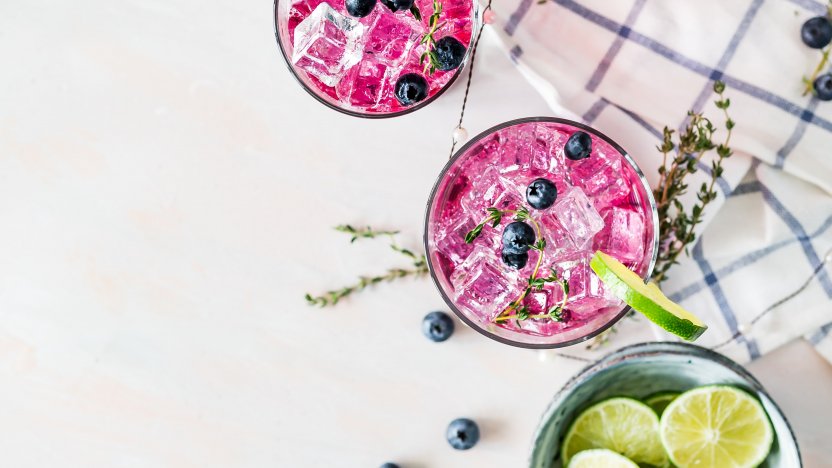Celebrating World Gin Day 2022: A splash of intellectual property

Gin has been around for more than 1,000 years, but there’s never been a better time to be a gin drinker. To celebrate World Gin Day on 11 June, we examine the intellectual property considerations surrounding the popular spirit.
Gin is a smooth spirit distilled from the berries of the Juniper tree and its origins can be traced back to an older drink from Denmark known as Jenever, which was traditionally medicinal. Nowadays, gin is drunk solely for pleasure and is produced in different ways from a wide range of herbal ingredients, giving rise to a number of distinct styles and brands.
Gin renaissance
In 2019, gin was announced as the UK’s favourite spirit, with it even connecting with younger consumers as reports suggest 55% of 18-24’s have been drinking the spirit. There have been a number of factors involved in the drink’s return to popularity with consumers. The rebrand of gins such as Bombay Sapphire as ‘premium’ products with a 'premium' look and feel, as well as the introduction of craft gins and engaging marketing activity have contributed to the interest in premium gin.
The number of UK gin distilleries grew by 110 in 2021 as our appetite for the spirit soared during the pandemic. In the UK, figures from the Office for National Statistics show that there are now 820 gin distilleries, up from 710 in 2020 and 190 in 2015.
Product diversification
In addition to these new producers entering the market, long term players have found ways to diversify and retain their market share by introducing new flavours, ready-to-drink products and alcohol-free versions.
Beefeater Blood Orange and Pink have grown into best sellers, although Beefeater Dry has not shared that trajectory; in fact, it’s been overtaken by Hendrick’s. Eight variants currently feature in Gordon’s line-up, including Sicilian Lemon, Mediterranean Orange, White Peach, Spot of Elderflower (possibly not the most enticing product name ever), Sloe and Premium. The UK’s best-selling gin is Gordon’s Pink, not Gordon’s. Tanqueray Flor De Sevila is now a top 10 brand by volume. Flavoured gins make up most of the biggest selling variants and it is possible that without its success, gin would have long been relegated to a trend of the past.
Both Gordon’s and Tanqueray have also introduced a 00, alcohol free, version of their popular gins. Since, by definition, gin is an alcoholic liquor technically these goods are not ‘gin’ and sit alongside other non alcoholic 'spirits' such as Ceder’s, in stores and consumer’s choices.
The launch of seasonal products, such as Marks and Spencer’s Nutcracker inspired gin and Aldi’s Platinum Jubilee inspired glitter gin, ensure that gin is never far away from our thoughts, and our shopping trolleys, as special occasions come around.
The popularity of gin has led to various collaborations taking place, including between manufacturers and football clubs. For example, Leicester City Football Club and Burleighs launched 'Wonderstrike Gin'. While Waitrose has launched a Buckingham Palace gin to celebrate the Queen’s Platinum Jubilee.
This strategy of collaboration and diversification has successfully maintained the momentum of the early years of the gin boom, broadening the sometimes narrow appeal of the traditional spirit and embracing new consumption occasions and opportunities. However, these developments in the gin industry also present IP challenges to brand owners.
Intellectual property considerations
Should trademark protection be sought for every variation of your branding and label, across a full range of flavoured products, or is it sufficient to protect only your core brand? Ultimately, this will depend on the anticipated longevity of the branding and success of the product, and whether that justifies investment in protecting it in its own right.
Similarly, should design protection be sought for all shapes and sizes of bottles used, or is it only worthwhile to have protection for the shape of your longstanding products? This is only likely to be relevant where features of the bottle are striking and unusual and differentiate it from others on the market.
Furthermore, as a brand evolves, attention must be given to the goods listed when filing trademark applications to ensure that manoeuvres into the non-alcoholic and ready-to-drink arena are covered by corresponding specifications, by including Class 32 rather than just the traditional goods in Class 33 in applications. Avoid infringing any earlier rights in this area by conducting clearance searches.
Enforcement
Consideration must also be given to the strategy adopted when protecting the branding of sub-brands and seasonal items. Marks and Spencer’s took on Aldi for a second time in 2021 when it produced a ‘strikingly’ similar Christmas gin. Both retailers' gins came in a bell-shaped bottle with a light in the base, which illuminates edible gold flakes in the liquid. M&S claimed Aldi's products "constitute designs which do not produce on the informed user a different overall impression to the [M&S] designs” and cited media reports comparing the products as evidence of similarity.
This case may ultimately settle, but how much should a business invest in enforcing intellectual property rights in a seasonal or limited edition product?
Collaborations
Where collaborations are happening between gin manufacturers and celebrities or other businesses, which party should seek protection for the branding used? Where the name of an existing brand is being used on new products, the brand owner may need to review its current protection for the trademark to check that it covers these new products. It might also be appropriate to have a licence agreement in place to protect the interests of both parties, even if the collaboration is only for a limited period, or even a single event.
The choice and quality of goods on the market, and its ever evolving nature, is a challenge for brand owners in respect of IP, who have to keep up with a growing product range.
Get in touch with our trademark experts for further advice on protecting gin and spirits brands.